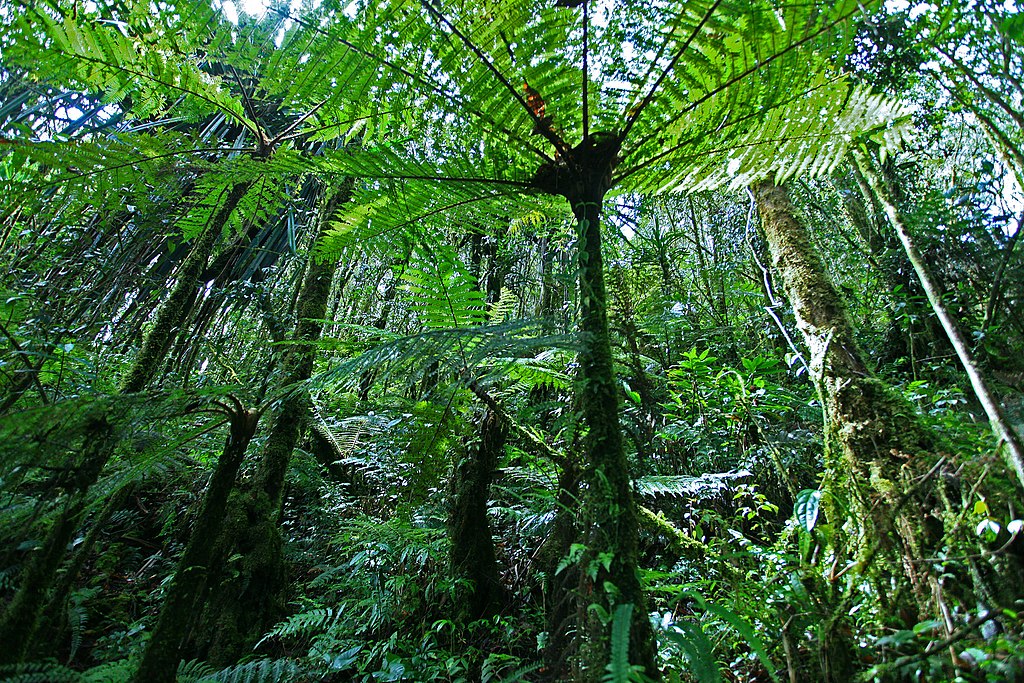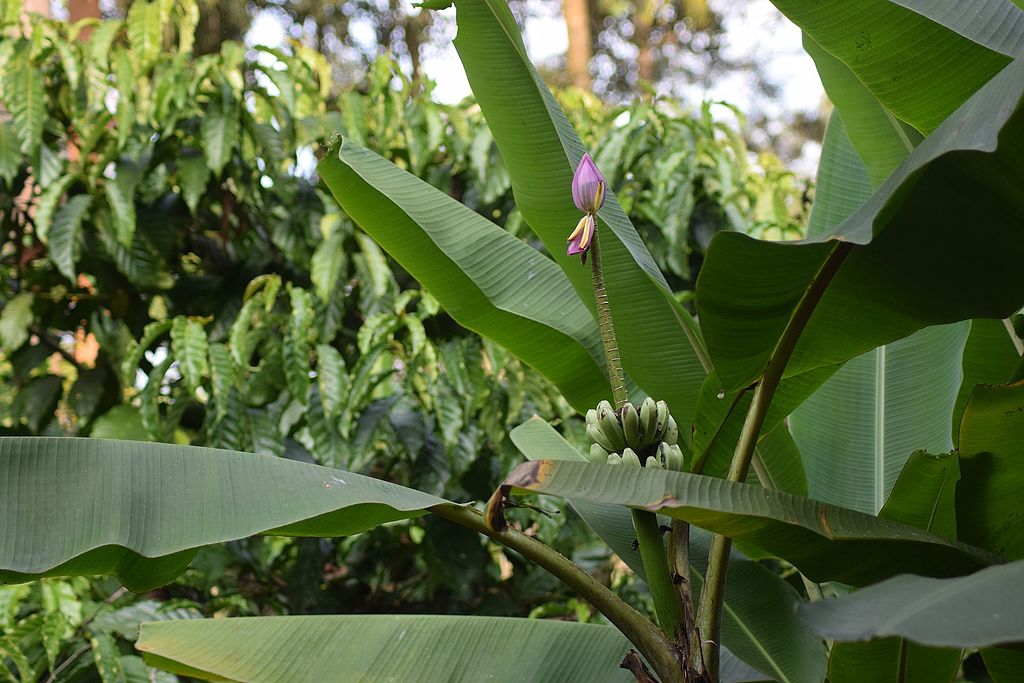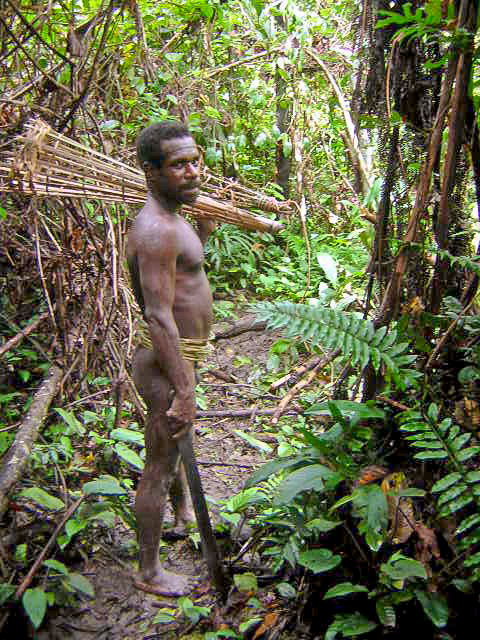What modern conservationists can learn from humanity's long history with rainforests
There's a growing body of evidence that humans have been modifying tropical forests for over 40,000 years
Pristine. Virgin. Natural. These are a few of the words that conservationists and ecologists like to use to describe tropical forests, as they conjure images of remote jungles hidden away in exotic countries.
They are also the type of ecosystem that humans have been rapidly depleting since the European colonial era, though they provide us with such basic life needs as oxygen to breathe and clean water to drink. Recent archeological findings, synthesized by Patrick Roberts of the Max Planck Institute and colleagues in the journal Nature Plants last month, show that tropical rainforests weren't exactly free of human influence before that: people have been living in and modifying them for 45,000 years, four times longer than previously thought. The idealized view of tropical rainforests as wild and untouched Edens is largely wishful thinking, a response to the extensive destruction that we humans have brought upon them over the past few decades.

Tropical rainforest in Papua New Guinea
Scientists estimate that we are currently destroying 320 square kilometers of rainforest every day due to a catastrophic combination of deforestation for large-scale agriculture, slash-and-burn farming practices, the hunting and poaching of forest animals, and climate change. If we are to protect the rainforest that still exists, modern humans need to learn to live as part of nature, not in spite of it – and this new paper shows that we once knew how to do so.
The earliest verified evidence of our ancestors' dependence on rainforest resources comes from Borneo and Melanesia (an area of the Pacific Ocean stretching from New Guinea to Fiji), although there is a possibility that even the first Homo sapiens were living in the tropical forests of Africa as far back as 200,000 years ago. Early humans in these areas of Southeast Asia and Oceania burned the forest to secure the resources they needed to survive, such as carbohydrate-rich plants that grew on forest edges and wild pigs that foraged in open areas. Pollen records from New Guinea show that human activity even slowed rainforest recovery after the Last Glacial Maximum, about 20,000 years ago, an impressive feat for what was likely a relatively small group of people.
There is also an ongoing debate among paleoecologists and anthropologists about how much our species is to blame for extinction of tropical forest megafauna, including large marsupials in New Guinea, ancient lions in Australia, and giant ground sloths and mastodons in the Amazon. The loss of these huge animals had ramifications for the entire food web, and the resulting changes in plant distributions and nutrient cycling have shaped today's forests. Early humans also transported small mammals and edible plants, including yams and taro, around Southeast Asia, facilitating the rapid spread of these plants to new habitats in the Philippines and other Melanesian islands.
A significant shift occurred around 10,000 years ago, though: humans transformed from foragers to farmers, and agriculture was born. Again, the earliest evidence comes from New Guinea, where our ancestors domesticated the banana and other tropical plants over 8,000 years ago.
These crops were planted in the rainforest alongside wild species, a technique which we now call agroforestry. Elsewhere, domesticated plants and animals, such as avocados and cassava in the Caribbean and Polynesia, are believed to have contributed to the extinction of some tropical trees, which were outcompeted by the newly arrived domesticated species. And, nowhere is the legacy of early human farmers more visible today than in the Amazon, where the distributions of existing Brazil nut trees line up almost perfectly with maps of 3,000-year-old human settlements.

A wild banana tree
While our ancestors certainly had some detrimental impacts on tropical forests, at that time (between 10,000 and 3,000 years ago), human populations depended entirely on the environment for subsistence and were small enough that they did not cause widespread destruction. However, in the past 2,000 years, the first urban centers appeared in rainforests with the rise of early civilizations: the Aztecs and Mayans in Mexico and Central America; the Incas in South America; the Khmer of Southeast Asia, and others. Tropical forests across the globe are dotted with the remains of ancient cities - think Machu Picchu in the Andes mountains and Angkor Wat in Cambodia.
Our understanding of these cities has been greatly expanded by recent advances in remote sensing technologies. For example, LiDAR (light detection and ranging), a mapping technique using lasers, has revealed the extensive hydrological infrastructure built around 800 - 1,200-year-old Cambodia cities that enabled this early city to function in this tropical environment. This is where archaeology has great potential to inform forest ecology and conservation: we still have much to learn about architectural and agricultural techniques that allow humans to live and even prosper in tropical landscapes without completely obliterating them.
This brings us to today. Conservation biologists, like me, are careful about how we convey our research to the public because biodiversity conservation in such high-value landscapes as tropical forests can be a controversial undertaking, especially when it precludes economic development.
Some years ago, for example, I was tangentially involved in the revision of a population estimate of an endangered species. The original estimate excluded a specific forest type, because researchers thought that the species in question didn't live there. In reality, they did, and because of that the next population estimate increased. This in no way reflected an increase in the actual population of the species (in fact they are still very endangered). Still, there was an extended discussion among the authors of the study as to how to best present the results, because they predicted that governmental officials and local business people would intentionally misconstrue the improved population estimate as evidence that this species actually was not endangered and that more land could be safely deforested.
Someone could potentially read Roberts' synthesis in that vein and argue that, because humans have been living in the tropical forest for so long and it still exists, it will somehow take care of itself and we don't need to do anything to protect it. But with 7.5 billion people on the planet, we are pushing forests to the limit of their resiliency, and they are at risk of being decimated. Preservation and conservation efforts are absolutely necessary to protect not only the thousands of plant and animal species that call these forests home, but our own species as well.
How can we move forward, now that the myth of the pristine rainforest has been busted? Roberts and his colleagues have a few ideas:
- We must engage with Indigenous peoples, who maintain traditional ecological knowledge. There are thousands of groups and tribes of people still living in forests across the tropics, from the Amazon to Africa and New Guinea, and they must be part of the solution to today's conservation challenges.
- We must encourage more dialogue among archeologists, conservation scientists, geographers, and between scientists and international bodies like the United Nations Educational, Scientific and Cultural Organization (UNESCO).

A Korowai man from the Indonesian province Papua
Ultimately, the 45,000-year relationship between humans and tropical forests gives me hope for the future of tropical biodiversity: there is clear evidence that caring for nature is embedded in who we are as a species. The "deep human prehistory of global tropical forests," as the authors refer to it, also gives ecologists a new way to view these forests and opens exciting new avenues for ecological research that incorporates local and historical knowledge.
Perhaps in acknowledging that there is no such thing as a "virgin" rainforest, and that people are an integral part of the solution to tropical forest conservation, we as a society can re-discover how to use our natural resources wisely, in time to save them.